The Cost of Inflation
What is it, why is everyone talking about it, and why should I care?
Remember two years ago when shops closed on or about March 17, 2020? And then they simply… did not reopen? For like, a long time? Something about a pandemic? At the time, in order to encourage strong economic activity within Canada, the Bank of Canada decided to leave the cost of borrowing money low.The hope was that people would continue to borrow—and crucially, spend—more money, helping to keep currency circulating in our economy.
Now, in 2022, we’re facing a whole different story. We’re faced with new uncertainties and challenges—from supply chain disruptions, pent-up demand for goods, and Russia’s war in Ukraine have contributed to a rise in the cost of consumer goods, also called inflation.
To curb these rising prices, the Bank of Canada has chosen to increase its key interest rate to 0.5%, and lenders across Canada are following suit. Bank of Canada’s rates often dictate the rates for other consumer needs, like mortgage prices, line of credit, and savings accounts.This post looks at what inflation is, what makes it happen, and what it means for us (normies).
What is Inflation?
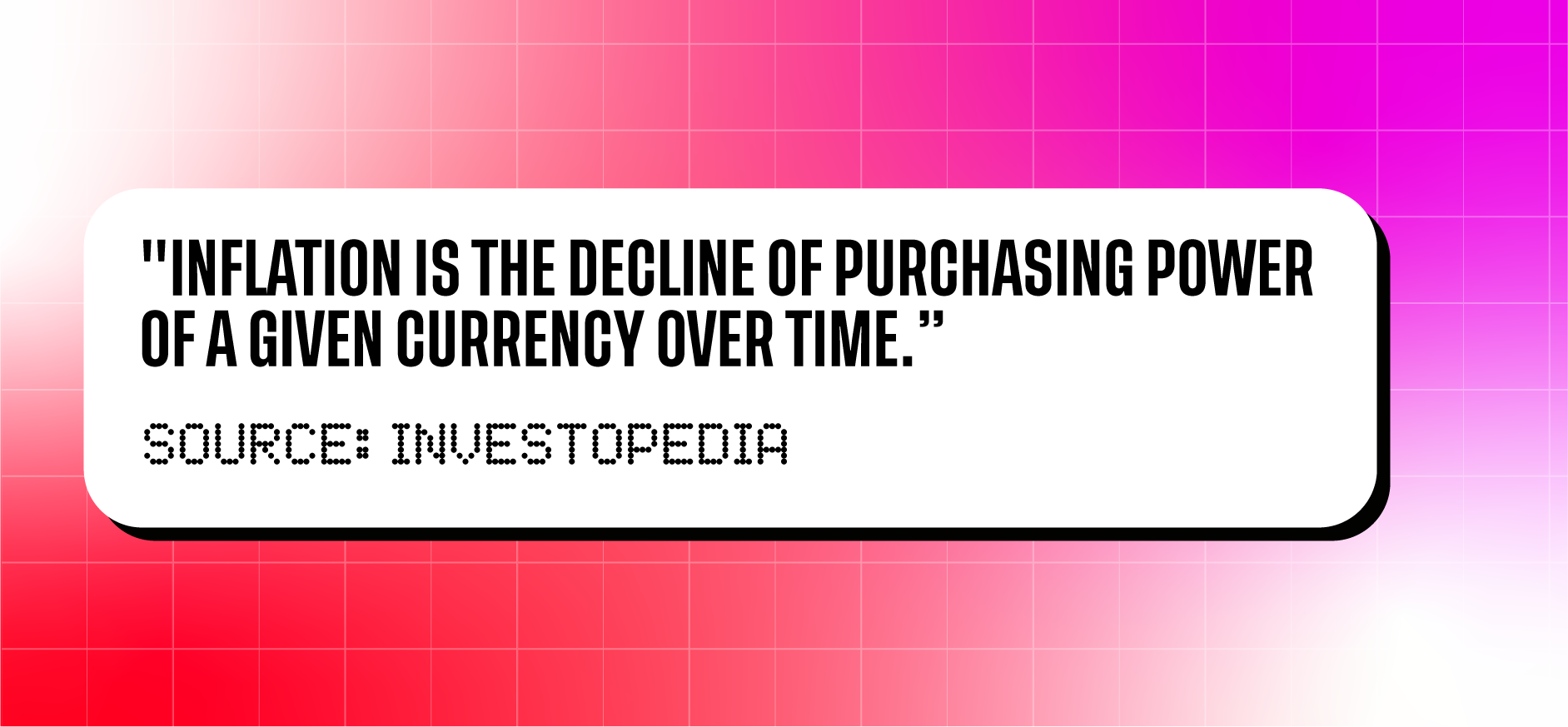
Often, inflation is illustrated by imagining a grocery basket full of eggs, bread, and… wine. (This “basket” has to include a variety of products and services to be a good measure of inflation, and is often represented by the Consumer Price Index, or CPI.) This basket we’ve got will cost us $10, say.
When inflation increases at a nonoptimal rate (i.e., when there’s too much inflation), the cost of goods rises. We might return to the grocery store to purchase the exact same basket of goods only to find the new cost is $15.
This means that our power to buy goods, per unit of currency, has diminished. This is how inflation “erodes” the real value of cash, and cash holdings or savings, over time.
What Causes Inflation?
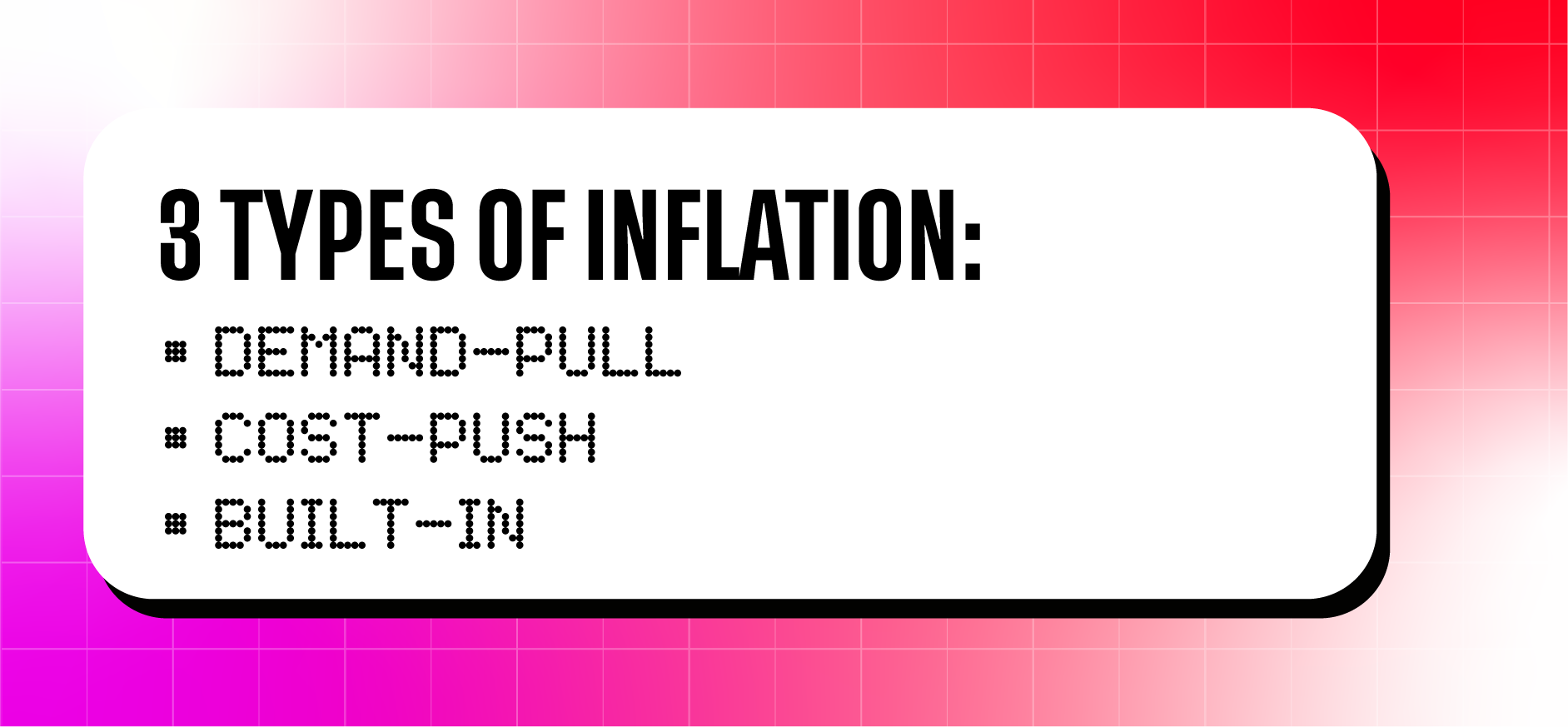
There are three general types of inflation: demand-pull inflation, cost-push inflation, and built-in inflation. An optimum level of inflation is actually a good thing, because it encourages economic activity and employment.
Demand-Pull inflation occurs when an economy is well stimulated, and consumer demand for products actually outpaces the production capability for those goods. As a product becomes comparatively scarce, its price can rise.
Cost-Push inflation is the opposite. This occurs when the cost of production rises, and that cost is passed along the supply chain to the consumer.
Built-In inflation is related to what can be called the wage-price spiral. There’s an old adage that the best predictor of impending inflation is the expectation. When consumers see the cost of living rise—even a little—they assume it will continue and demand higher wages to compensate. These higher wages are reflected in the cost of production, which drives prices up higher, and so on.
In Canada, we’re seeing bits of all of these types. This article itself could be considered a product of built-in inflation. Here I am, telling you that based on my research, increased inflation could occur in the next few years; this could drive you to change your behaviour.
What Does Inflation Mean For Me?
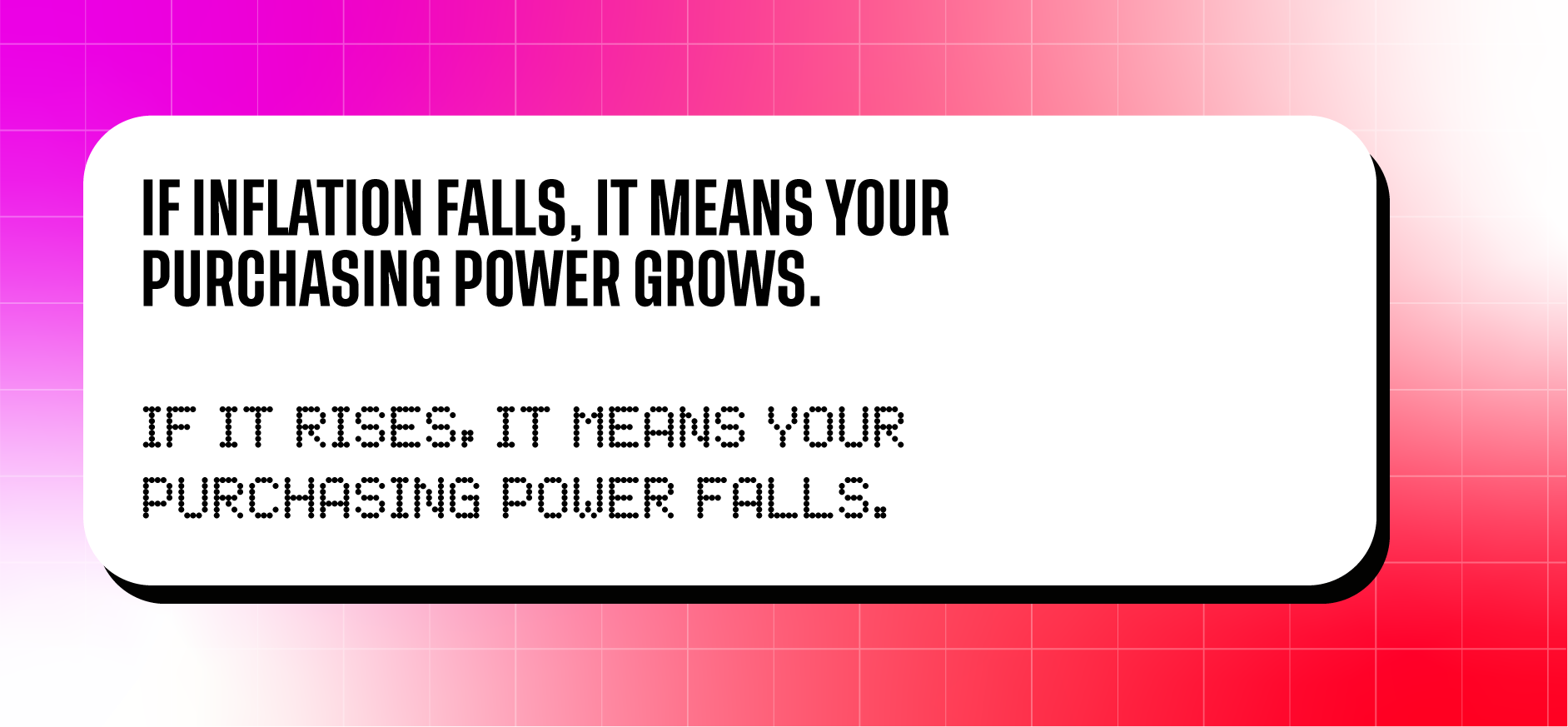
Inflation can have several impacts on the average consumer, both positive and negative. If inflation falls, it means your purchasing power grows. If it rises, it means your purchasing power falls.
Inflation is always a possibility, and there’s a few things you should be aware of. There are myriad, nay GAZILLIONS of potential impacts of inflation, but here are three you might find likely to impact you.
Consumer Purchasing Power May Fall
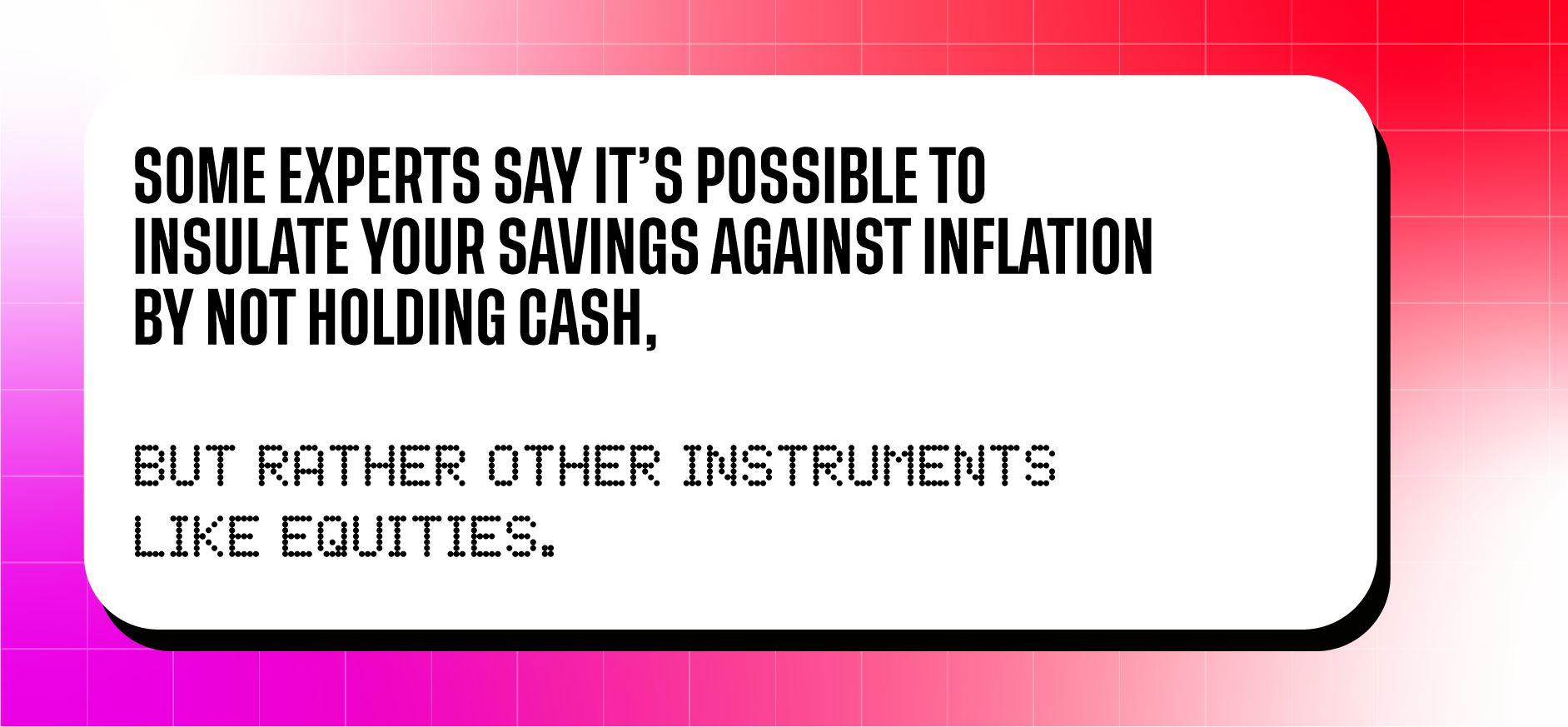
Talk to your advisor or broker if you’re worried about your holdings. Tell ‘em Mogo sent ya! They won’t know who we are, mind you, but whatever.
Borrowing Costs May Increase
To counteract inflation and tamp bullish economic activity, the Bank of Canada may elect to raise interest rates. If you have a variable interest rate on a personal loan, student loan, line of credit, or mortgage, this may impact you, as the interest rate on your balance owing may increase. Talk to your bank or broker if this concerns you.
Spending May Increase
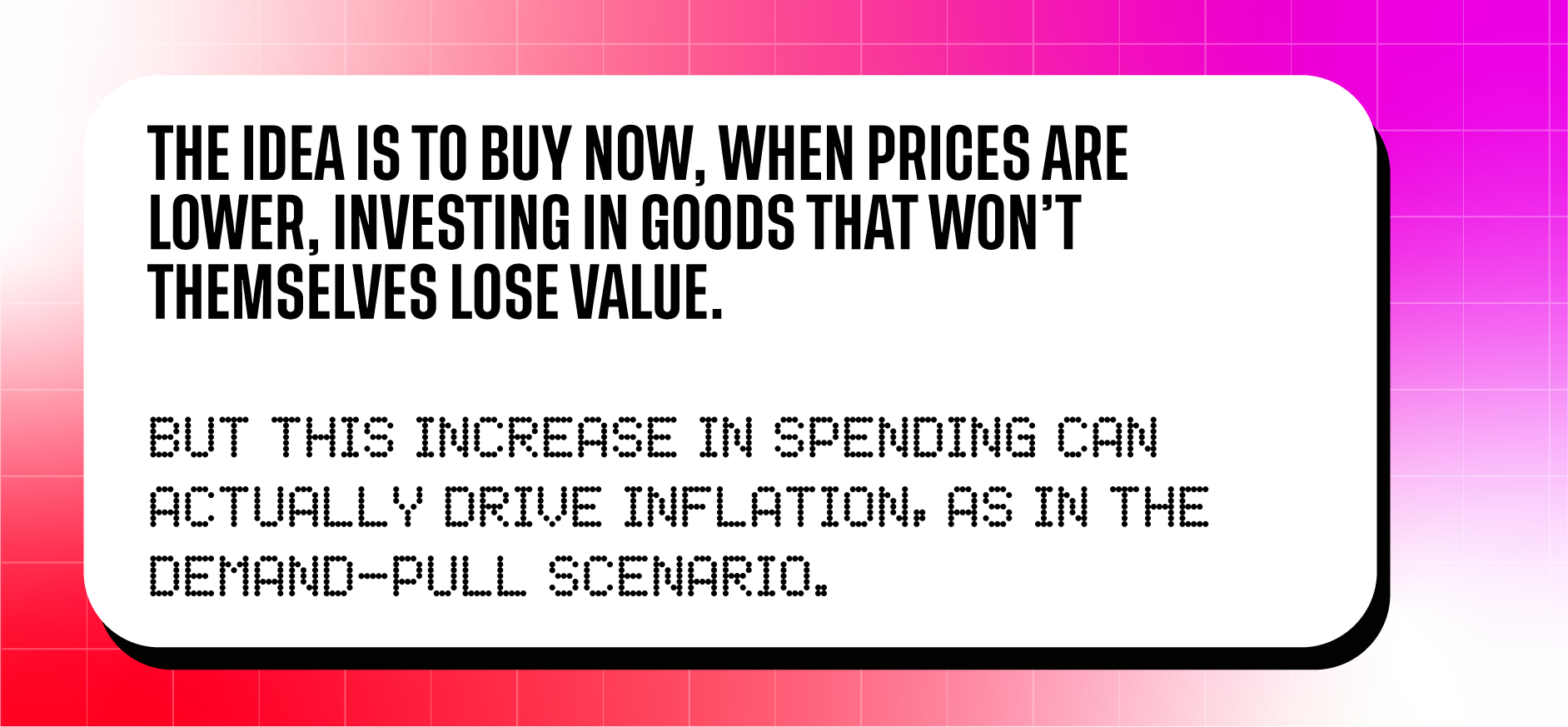
When interest rates climb and inflation gets out of control, people tend to withdraw from the market. Worried about the economy’s future, they feel they should save what they already have.
But in the early stages of inflation, oddly, the opposite tends to happen.
With continued inflation in the forecast, consumers often actually increase their spending. This makes sense: the value of the dollar will likely fall, but the real use-value of a pair of new running shoes with room to grow for little Tommy or a new coat for wee Jimothy that’ll fit ‘til he’s 10, or whatever, stays the same. The idea is to buy now, when prices are lower, investing in goods that won’t themselves lose value. But this increase in spending can actually drive inflation, as in the demand-pull scenario.
Inflation: you’re damned if you do, and you’re damned if you don’t. As consumers, it’s our job to get educated on economic trends like these so we know how to best respond and adapt as our economy recovers in unpredictable ways.
While you may not be able to control inflation, you can make your dollar go further when you spend with the MogoCard!
The MogoCard is a reloadable card made to help you spend less, while making a real difference in the world. No other card in Canada can help you master your spending, and plant a tree with every tap to help fight climate change, so that together, we can build a better future. Plus, it includes a free credit score and free identity fraud protection1.You got this, I got this, we all got this, y’all. Mogo out!
| GET MY FREE MOGOCARD |
This blog is provided for informational purposes only.
*Trademark of Visa International Service Association and used under licence by Peoples Trust Company. Mogo Visa Platinum Prepaid Card is issued by Peoples Trust Company pursuant to licence by Visa Int. and is subject to Terms and Conditions, visit mogo.ca for full details. Your MogoCard balance is not insured by the Canada Deposit Insurance Corporation (CDIC). MogoCard means the Mogo Visa Platinum Prepaid Card.
1-Free credit score is provided by Equifax and is only available to MogoAccount holders that have passed identity verification. The Equifax credit score is based on Equifax’s proprietary model and may not be the same score used by third parties to assess your creditworthiness. The provision of this score to you is intended for your own educational use. Third parties will take into consideration other information in addition to a credit score when evaluating your creditworthiness. Equifax® is a registered trademark of Equifax Canada Co., used here under license. No one can prevent all identity fraud and Mogo does not monitor all transactions at all businesses. Currently, Mogo only monitors hard inquiries into the Equifax® Canada Co. credit bureau and will provide push and/or email notifications within 24 hours of the inquiry being reported. Refer to the MogoAccount Terms & Conditions for more information https://www.mogo.ca/terms-and-conditions. MogoProtect identity fraud protection and Credit Score Monitoring are available to all eligible MogoMembers for free for 90 days from the time of initial MogoAccount registration. MogoProtect identity fraud protection and Credit Score Monitoring are available to all eligible MogoMembers for free for 90 days from the time of initial MogoAccount registration.